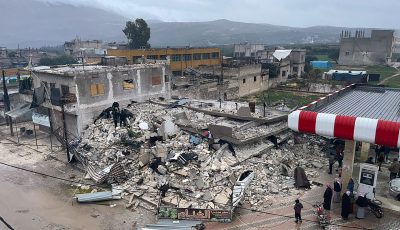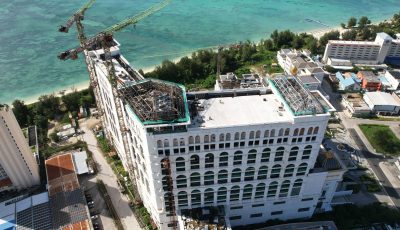FROM FESTPAC TO WESTPAC:
Guam governor remains focused on ocean resources, ancestors
TUMON BAY, Guam— Guam Gov. Eddie Calvo opened the 166th meeting of the Western Pacific Regional Fishery Management Council last week in Tumon Bay, Guam, with words of respect and love for the ocean. “We have limited land spaces and a sacred view of the ocean,” Calvo said. “The council discussion is extremely important.”
Calvo said Guam and the council have worked on numerous projects together. He was particularly pleased with the Americans with Disabilities Act compliant fishing platform at Hagatna, which served a dual purpose as a viewing platform during the Festival of Pacific Arts, which ended Sunday. He encouraged the council to continue work on extension of the platform.
He also singled out regional fishery concerns about shark predation and sea turtle regulations as well as a recent partnership with the Commonwealth of the Northern Mariana Islands for a nationally competitive Saltonstall-Kennedy (S-K) grant. Calvo said the S-K funds will be used to collect commercial fisheries import and export data as well as local fisheries data.
Calvo concluded his remarks noting that the people of Guam, like the people of many other island territories and nations, believe that ancestors who have died are still present and can be called on for their strength and goodness. “We understand the value and importance of our land; the importance and value of our ocean. As we move forward and work with each other and our federal partners, particularly in Washington, DC, our love for our islands is even greater than those tasked with the job. … The voices of the Pacific must be heard.”
Following a full day of presentations and reports, the Council voted to pursue the following Guam fisheries-related undertakings:
• To work with the Government of Guam to fund marine preserve markers and signs.
• To work on an educational video on fisheries in the Mariana archipelago.
• To help develop a permanent display in the new Guam museum to highlight the indigenous fishing practices of the Mariana Islands.
• To ask the National Marine Fisheries Service’s Pacific Islands Fisheries Science Center to study seasonal fishes, migration and fish behavior in Guam.
• To communicate the fishing community’s concerns to the Guam Department of Agriculture regarding the potential overexploitation of sea cucumbers in Guam and assist in developing options for a moratorium on sea cucumber harvest under the Administrative Adjudication Law until an assessment of the sea cucumber populations can be conducted.
• To work with its advisory body members, the CNMI and Guam governments, the Mayor’s Council of Guam, and representatives of Palau, Federated States of Micronesia, Marshall Islands, Philippines and Japan to share information and management regimes, if any, and to discuss green sea turtle populations in the region.
• To work with Guam Department of Agriculture and the Mayor’s office in Yigo to identify an area in the village to build a boat ramp and to have this project included in Guam’s Marine Conservation Plan.



























